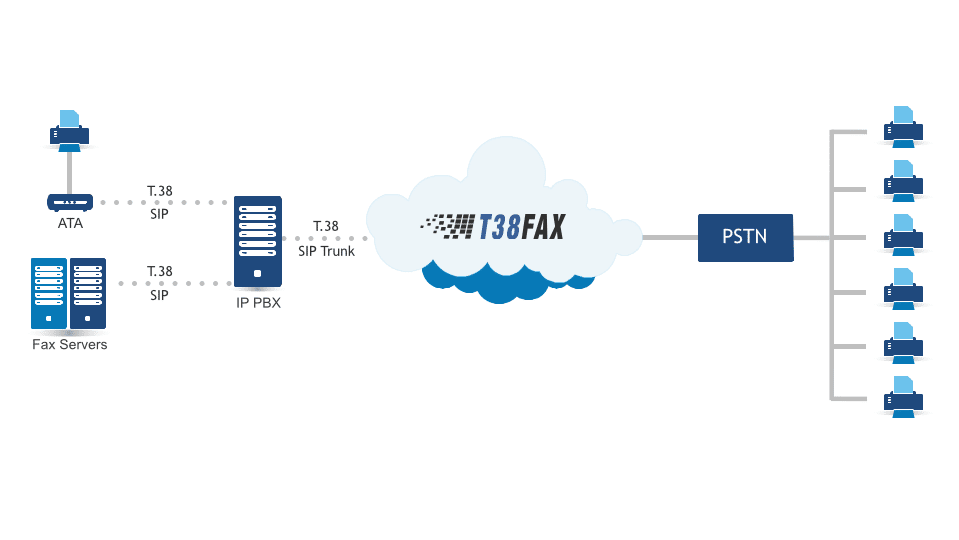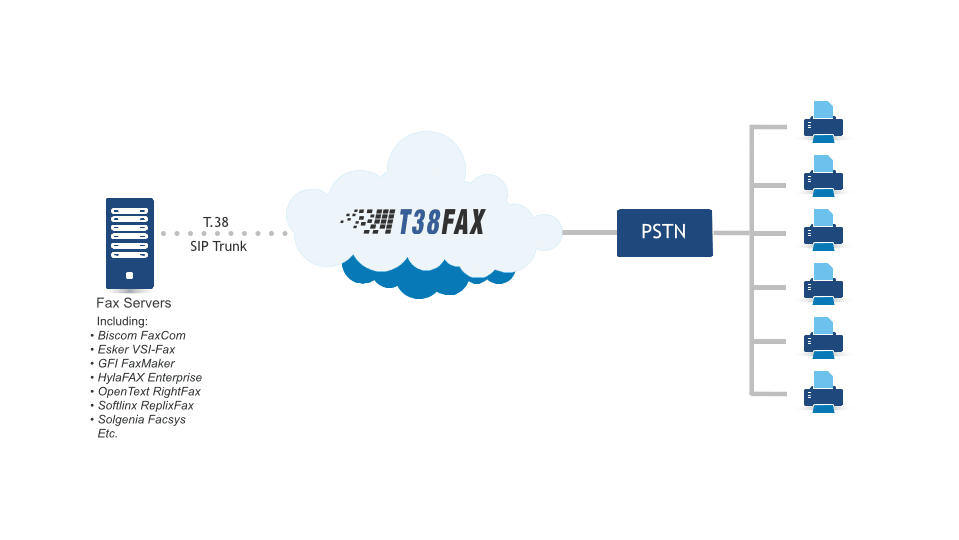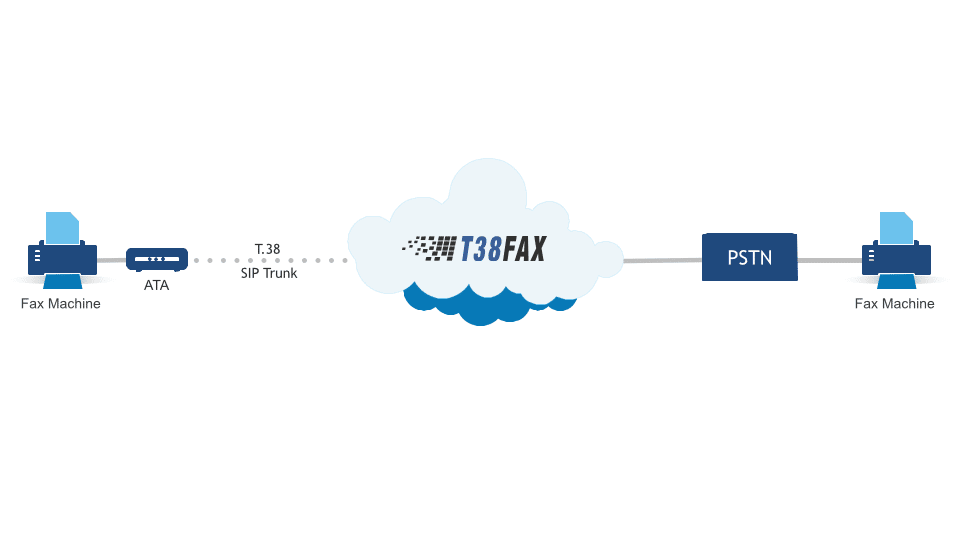Power-T.38 For Business
Reliable fax over SIP requires T.38 Fax Over IP, but you’ll be hard pressed to get your current SIP service provider to offer you T.38 on your service and even if they do offer it, they don’t guarantee it will work, and they won’t support it if it doesn’t. Fortunately, most of these devices can be connected directly to our service using a small piece of hardware such as an Analog Telephone Adapter (ATA) or a multi-port SIP gateway such as the GXW4004 and they will continue to work as they did before.
Perhaps you have a Cisco, Avaya or Asterisk-based IP-PBX and you’d like that system to be able to send and receive faxes itself, or you’d like to be able to use that system to support any number of T.38 devices connected to that IP-PBX using T.38 Pass-through? No problem, our Power-T.38 SIP trunks are the solution there too. In fact, if you have a use-case that involves fax on any level, and you’re having problems getting it to work reliably over SIP, we have the solution you need, and we also have the expertise to be able to explain why!
Give us a call today and tell us your story – we’re confident that we’ll be the last people you ever consult about fax.
Now, the T.38 conversion happens at the interface between SIP and the PSTN. For most SIP-based service providers this means it’s something their carrier does. As long as you have configured your system to pass along T.38 messages between your carrier and your customer, commonly referred to as T.38 pass-through, your customer’s T.38 device ends up talking T.38 to your carrier’s media gateways, and it ‘just works’.
Unfortunately, there’s not a single carrier, not even Level3, who does T.38 well. Even worse, the quality of the T.38 can vary wildly depending on what route is used to switch any given call.
That’s where we come in. Our T.38 is consistently awesome. We don’t use our carrier’s T.38 — instead we collocate our equipment inside their network and do G.711 audio directly onto the PSTN over a single optical hop. Your customers’ equipment will only ever interact with our T.38 media gateways, ensuring predictable, high quality and worry free faxing.
We really know what we’re talking about. Ask most people how to get T.38 working and they’ll simply parrot back what google has told them – namely to slow the speed down to 9600 bps and turn off ECM error correction. This misinformation is so widespread that most carriers intentionally disable ECM support in their T.38 gateways. We think that’s crazy – the whole point of a facsimile is to have an exact copy of the image on the other side and that doesn’t happen without ECM, and if you slow the speed to 9600 you’re eliminating faster speeds and modulation speed that help cope with challenging audio conditions.
We have a great deal of experience with Cisco, asterisk and asterisk-based platforms such as FreePBX, freeswitch, and a whole host of other common SIP switching gear.
Finally, we’re fax industry veterans and if your customers do report any issues, our fax support ninjas will have your back. Imagine being able to escalate a fax problem to your upstream carrier and have them actually diagnose and fix it!!??





